Defined
Introduced in 1992 by Drs. Robert Kaplan (Harvard Business School) and David Norton as a performance measurement framework.
The Balanced Scorecard:
- Is a strategic planning and management framework used to track strategic goals, KPIs, and projects
- It is used to align business activities to the vision and strategy of the organization by monitoring performance against strategic goals
- When used correctly, it accelerates and improves an organization’s ability to execute its strategy
- Allows one to translate strategy into action
- Assists with planning for long term organizational success
- Provides a balance between :
- Financial measure and performance
- Long-range competitive abilities
- Offers a balanced view of the organization upon which they can further add-on
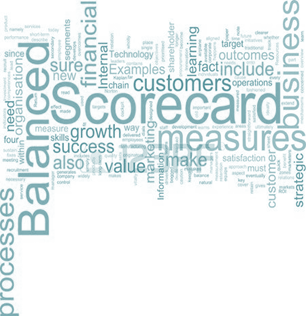
Balanced Score Card Why?
The leadership team is responsible to various people:
Stakeholders, Shareholders, a board of directors, a council, citizens etc.
This depends entirely on the type of organization
In order to answer to this group, your team needs to ask two important reverse-looking and forward-looking questions:
- How did we perform this past month, quarter, and year?
- How are we going to do next month, quarter, and year?
- This requires a management system that is able to to look back and forward (with leading and lagging indicators)
- One not only needs to know today’s performance and predict tomorrow’s performance, but you need to be able to demonstrate how your spending on strategic projects today will help you improve your impact in the future
- The Balanced Scorecard is the closest management tool to a crystal ball as you will find

Few Facts…
97% of typical workforce does not understand the Organization strategies
….. Source: Balanced Scorecard Collaborative
90% of Organizations fail to execute their strategies successfully
….. Source: Balanced Scorecard Collaborative
83% found the most significant impacts of BSC implementation in business actions
….. Source: 2GC Balanced Scorecard Usage Survey
80% of Organizations using BSC reported improvements in operating performance
….. Source: Balanced Scorecard Forum
66% of these Organizations reported increase in profits
….. Source: Balanced Scorecard Forum
31% of companies reported BSC as extremely helpful; 42% as a very helpful
….. Source: 2GC Balanced Scorecard Usage Survey
50% of Fortune 1000 companies are using the BSC
….. Source: Bain & Co

Evolved Framework
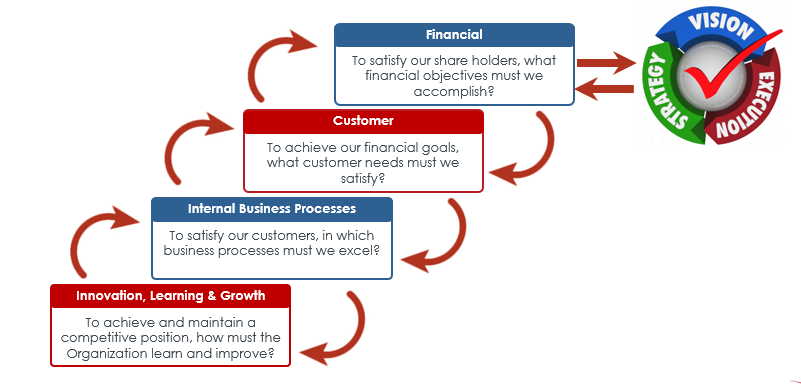
ProStream Approach
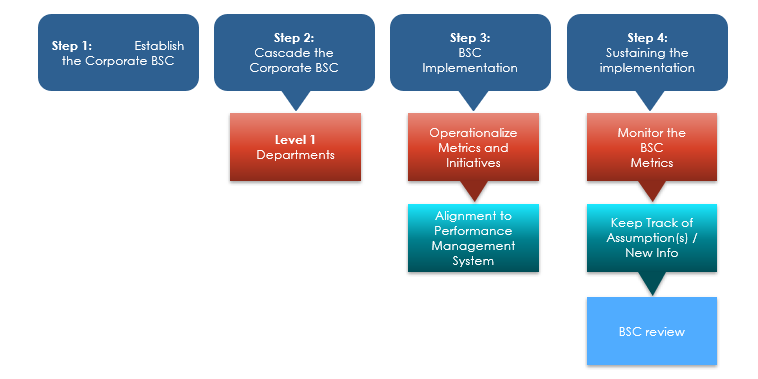
Why BSC Software?
Problem Statement
Common issues when managing a Balanced Scorecard without software include:
- Gathering data takes much time – data owned by many people, across the organization.
- Reporting for each element not regular (typically monthly and quarterly) pattern.
- Different people want to report in different formats.
- Data isn’t adapted for different reports and audiences.
- Inaccurate scorecard.
Solution
Fitting nicely between the two extremes:
Excel (which can become unmanageable)

ERP scorecard (which requires much more time and money)
BSC-Pro scorecard software option:
- Is robust and highly configurable.
- Communicates with both Excel and ERP apps via API or data loader tools.
- BSC-Pro solves all the common issues.
- Saves business teams save time and effort as they work toward achieving their strategic goals.
The technology enables organizations to:
- Get everyone on the same page.
- SaaS platform that acts as a central hub of information.
- Assign different ownership levels to multiple users.
- Automate monthly or quarterly reporting, from data imports to email reminders and report formatting.
- Receive alerts and notifications when information is updated.
- Create a variety of chart types and custom fields on pages.
- Generate summary reports which can be templated for different audiences and timeframes.
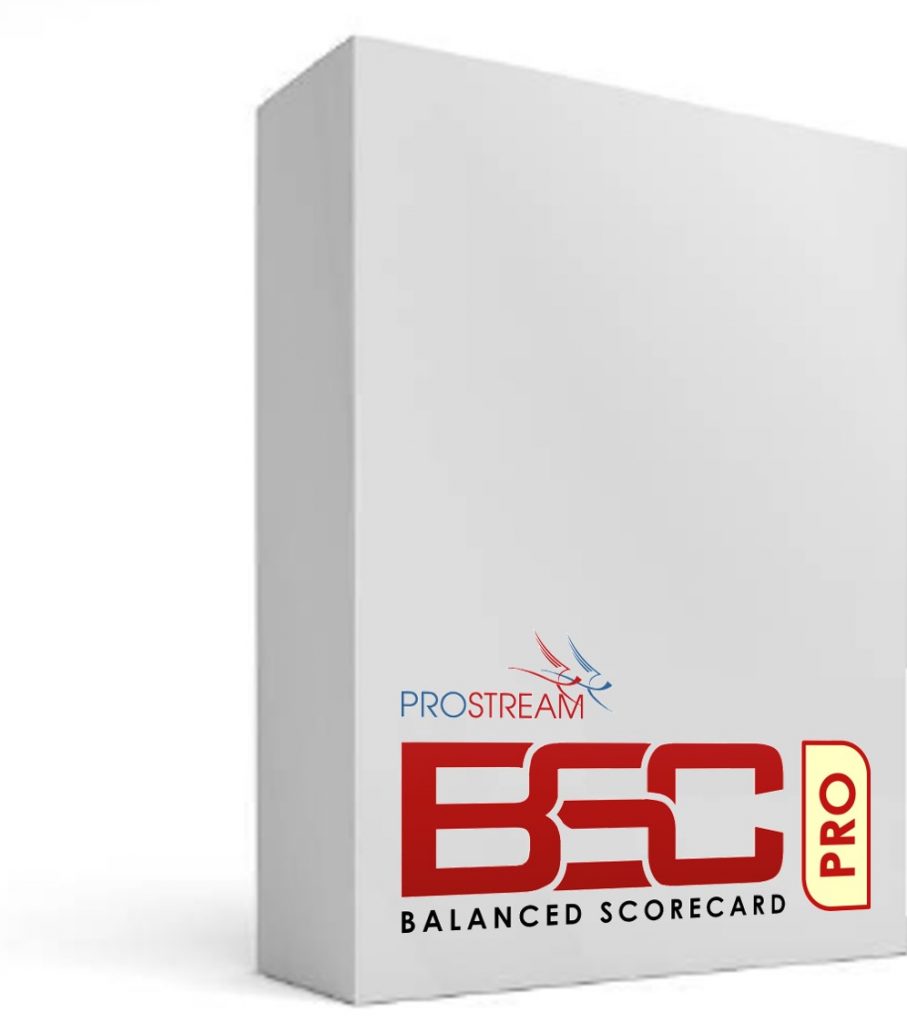
The Difference

- Makes strategy and organizational goals operational
- Translates goals into performance measures and targets
- Brings to focus drivers of future performance
- Focused measurement for “success”
- Umbrella/filter for a variety of diverse corporate programs
- Aligns employees to strategy execution
- Performance appraisal linked to BSC
- Instant performance tracking and monitoring
- Exclusive BSC dashboard for entire Organization
- Red/amber/Green flag for Departmental performance
- Executive and Managerial decision making tools
Case Study-Deployment at a Leading Insurance Company

- Define the Corporate level Balanced Scorecard for deploying strategy
- Cascade the Corporate level Balanced Scorecard to all employees
- Define departmental goals and objectives aligned with Corporate objectives
- Align performance appraisal to BSC
- Maintain and enhance capabilities to deliver strategies
BSC Roadmap:
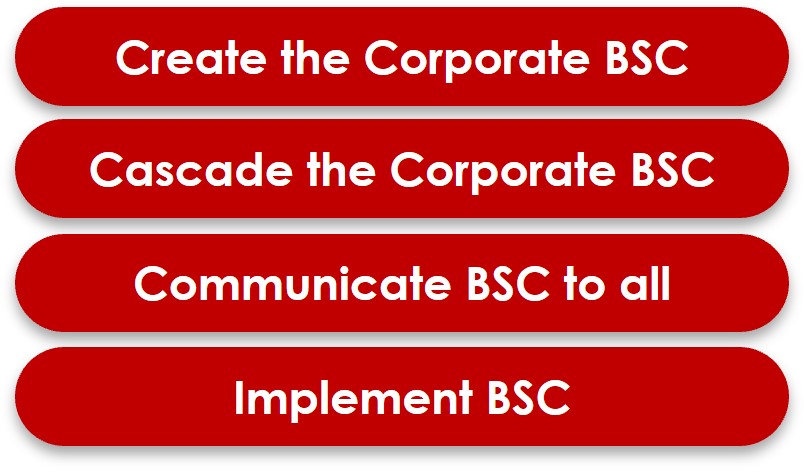
Key Steps:
- Alignment of Vision, Mission with Goals (Short and Long Term)
- Customer Analysis
- Competitor Analysis
- Market and Future Trends Analysis
- Internal Capability Analysis
- SWOT Analysis
- Recommendations based on SWOT
- Analysis
- Identification and Prioritization of
- Strategic Objectives
- Finalization of the Strategy Map
- Assignment of Metrics for Objectives
- Identification and Prioritization of
- Strategic Initiatives to achieve Objectives
- Finalization of BSC
- Future Plan for Cascade, Implementation and Review of BSC
Outputs Delivered:
- Balance score card completed for all employees
- Scorecards communicated
- Aligned with existing appraisal system
- Linkage to Individual Goals
- Initiatives operationalized and managed
- Measurement initiated
- Sharing of Dashboards
- Tracking and review of BSC performance
